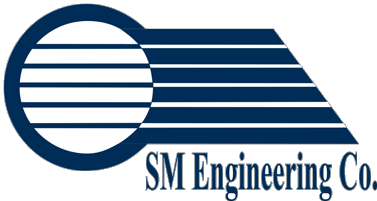Compressed Air Energy Saving Improvements
- The Big Three
- Reduce Air Pressure
- Repair Leaks
- Recover Compressor Waste Heat
- Others
- Reduce use of pneumatic tools
- Reduce/eliminate inappropriate uses
1. Reduce Air Pressue – No Cost
- Reduce the system air pressure to the lowest possible level
- Rule of thumb: for every 2 psi reduction, 1% of compressor input power is saved
- Example of Savings: 150hp compressor is reduced from 110 psig to 100 psig
Energy Savings: kWh=56,210, $=2,668; Demand Savings: 9.2 kWh, $=451;Total Savings = $3,118/yr
2. Repair Leaks – Low Cost
- Plants with no air system maintenance program may have 20+%
- Goal is <10% leaks (energystar.gov)
- Relatively inexpensive to repair
- Multiple ways to detect leaks:
- Ultrasonic Leak Detector (best and most accurate way)
- Listen for them when production is shut down
- Apply soapy water to lines and watch for bubbling.
- Once found, repairing leaks can be simple as tightening a loose connection.
- Example of Savings: 2 x 250 hp compressors, 8,400 hrs/yr, average flow 500 acfm, $54,200/year, if leaks reduced from 20% to 10%.
- Energy Savings: kWh=61,196, $=3,978; Demand Savings: kW=63.4; Total Savings = $3,978/yr.
3. Recover Waste Heat – Quick ROI
- Only 10% to 20% of electric power of an air compressor is used to raise pressure.
- The remainder of that electric power is dissipated in the form of heat.
- Up to 50% of this heat can be captured and put good use, examples below:
- Comfort heating
- Hot water heating
- Feedwater pre-heating
- Example of Savings: 125 hp compressor, 4000 heating hrs/yr, $8.00/MMBtu (gas used for heating)
- Estimate 60% input power to space heat
- Avoided cost for heating = $7,600/yr
4. Reduced Use of Pneumatic Tools – Low Cost
- Because only 10%-20% of electric power is used to raise pressure, air powered tools are highly inefficient.
- Example of Savings: 150 hp compressor, 6,350 hrs/yr operation, $0.075/kWh
- Compressed air cost $.28 per 1000cf
- 1.35 hp uses 55 cfm air (Cost to operate 1 hr = $0.92)
- 1.35 hp electric grinder (Cost to operate 1 hour = $0.089)
- That’s a 93% savings!
5. Reduce Inappropriate Uses
Because compressed air is expensive, its use should be limited for applications for which no alternative is reasonable.
-
Commonly Used Application Alternatives Open Blowing Broom, brush, blower/fan Vacuum Generation Dedicated vacuum pump Personnel Cooling Fractional horsepower fan Cabinet Cooling (Vortex tubes) Mechanical cooling
Summary
- To reduce operational cost related to compressed air:
- Reduce operating pressure
- Repair Leaks
- Recover waste heat
- Other improvements
- Reduce use of pneumatic tools
- Eliminate inappropriate uses
References:
- No/Low Cost Energy Saving Opportunities in Compressed Air Systems; By, Keith A. Woodbury, Director, Alabama Industrial Assessment Center.
- Motors and Industrial Systems: Optimizing Compressed Air Systems; Energystar.gov.


